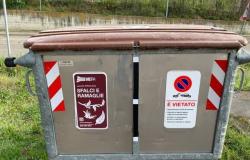A vast Roman stately villa with an impressive spa facility, home for servants, areas for animals and crops, dating back to the Roman imperial age, i.e. the first century and on whose ruins, in the fifth or sixth century, a church of which traces of the apse and some perimeter walls remain: here, it is here, on the southern borders of Classe, a stone’s throw from the Enav Radar Tower, on the edge of the Adriatica state road, a stone’s throw from the Roman era Via Popilia , the most important archaeological discovery of the last thirty years which – as Superintendent Federica Gonzato underlines – “adds a further piece to the history of the Classe area”.
An unexpected discovery (although not surprising because the surrounding territory already in the last century had handed over to posterity the traces of the Ca’ Bianca church and a necropolis) made possible thanks to the preventive archeology procedure deployed some time ago in view of the excavations for the Ravenna metadonotto sea-Ravenna land (to which were then added the works for the gas pipeline connecting to the regasification ship), all works carried out by the ‘Romana Costruzioni’ company on behalf of Snam which is responsible for financing the archaeological excavations which are still continuing. Excavations conducted by the archaeologists of Gea srl of Parma under the direction of Sara Morsiani, archaeological official of the Superintendency of Archaeology, Fine Arts and Landscape of Ravenna, who yesterday acted as guide, together with colleagues from Gea, in the exceptional public visit to the construction site. It all started, it was said, with preventive surveys, the archaeological and wartime reclamation ones: fragments of bricks were noticed in the earth extracted from the drills, trench excavations were arranged and here is the first evidence of what could be ancient underneath. The archaeological excavation began in July a year ago and the vestiges of that ancient past began to emerge one meter and seventy below the ground level, a level at which groundwater is already beginning to emerge, an element which fundamental for the services of that elegant villa and its spa. At the moment the excavation area extends over approximately nine hundred to one thousand square metres, “but there are areas in which we still have to proceed following the traces that have emerged and others, surrounding, in which there could be more and which will also be the subject of research ” highlights Sara Morsiani. The archaeologists of Gea, each specialized in specific sectors, have meticulously illustrated the traces brought to light: as regards the villa, these are the foundations and the original walking surface, the heating system through empty brick ducts in the centre, and the water supply system both for any fountains and for internal services and for the vast spa complex. Among the well-preserved structures there is in fact an underground tunnel with sturdy brick walls which at the time housed, according to the most accepted hypothesis, a rigid wheel, similar to that of mills, for collecting water in special wooden boxes, many of which were found, and emptying from above into lead pipes to give the liquid speed and pressure. Intact wooden pins were also found.
Alongside this area there are others relating to other parts of the villa and one of these shows traces of the foundations of a church with an apse and three naves, built perhaps three centuries later, on the ruins of the villa. The excavations also revealed many finds of amphorae, pottery, ampoules, lead pipes, partly destined, after the study, for the museum, while the traces of the villa and the church (duly subjected to particular photographic shots) will probably and inevitably end up be covered, as is the practice in these cases of isolated discoveries.




